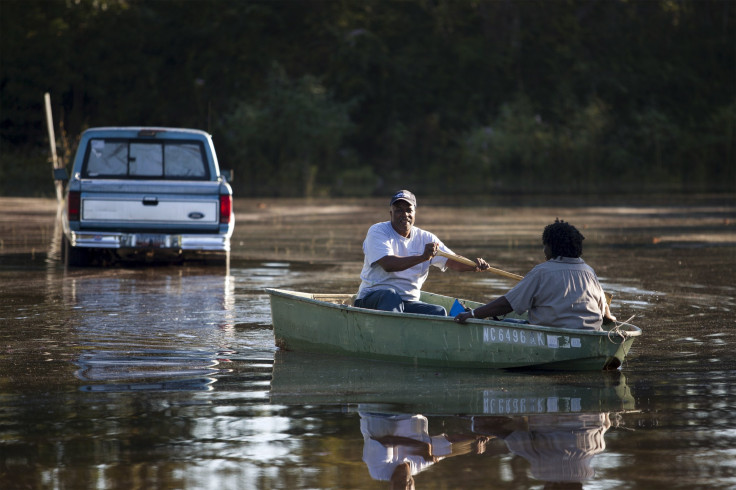Global Warming Effects On Earth: Catastrophic Rain Storms Could Bring Flooding And Extreme Damage

Bigger, stronger and more frequent rain storms are in the forecast in the long-term future for the U.S., a new study that analyzed the effects of climate change predicted.
By the end of the 21st century, global warming and its effect on weather patterns will lead to five times as many major downpours in a season than what is seen now, the study concluded. Rainfall like that, which in the past has washed out homes from catastrophic flash floods and swept property away, could inflict significant infrastructure damages as storms intensify, the study, published Monday in the journal Nature Climate Change, noted.
Major weather events have already increased in frequency recently, but the study found that future weather events could involve as much as 70 percent more rain. Heavy rainfall incidents were also becoming more frequent, the 2014 National Climate Assessment found, with the Northeast experiencing a 71 percent increase.
“I think this is one of the most severe consequences of climate change, at least in the U.S.,” Andreas Prein, a co-author of the study at the National Center for Atmospheric Research in Boulder, Colorado, told ClimateCentral.org. “We see this in the real climate already. It will only intensify.”
Using a high-resolution model to include the heaviest rainfall events, which are difficult to map because they tend to occur on smaller scales than are generally easy to map, the researchers analyzed the effects of global warming on storms in the lower 48 states. With the continued increase of heat-trapping greenhouse gasses, the U.S. can expect dramatically increased heavy rain events, especially on the coasts, they determined. Central states are also forecast for increased rain intensity but will still experience soil evaporation that was expected to leave the area drier and negatively impact agricultural yields.
Researchers indicated that limiting greenhouse gasses in the coming decades could reduce how intense the storms ultimately end up becoming.
© Copyright IBTimes 2024. All rights reserved.






















